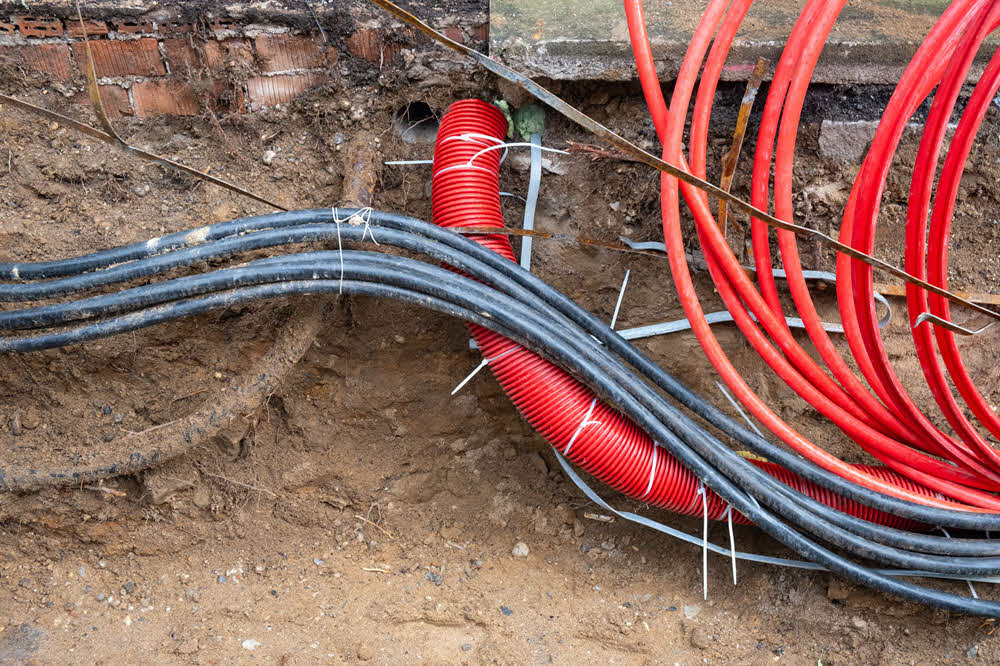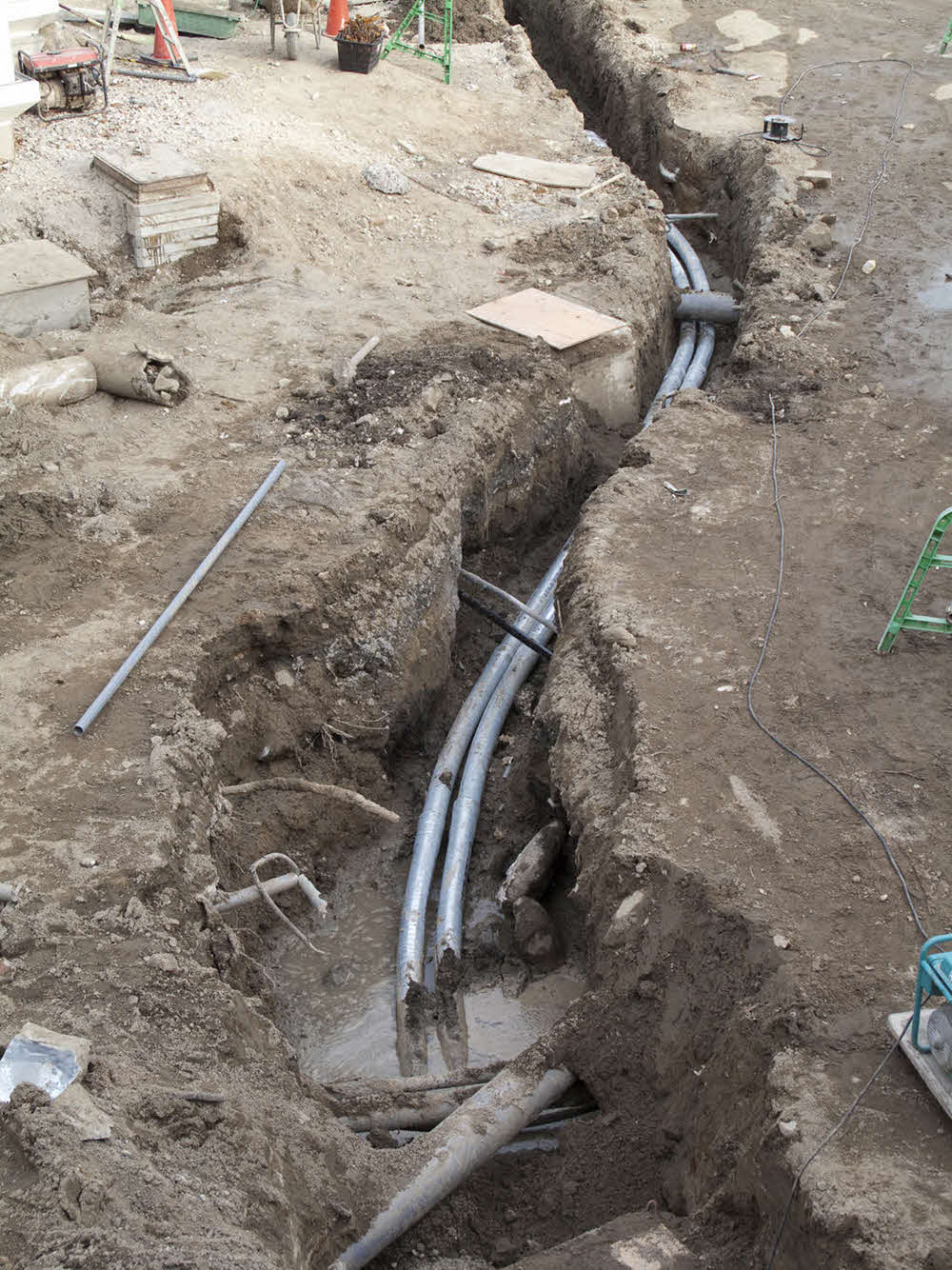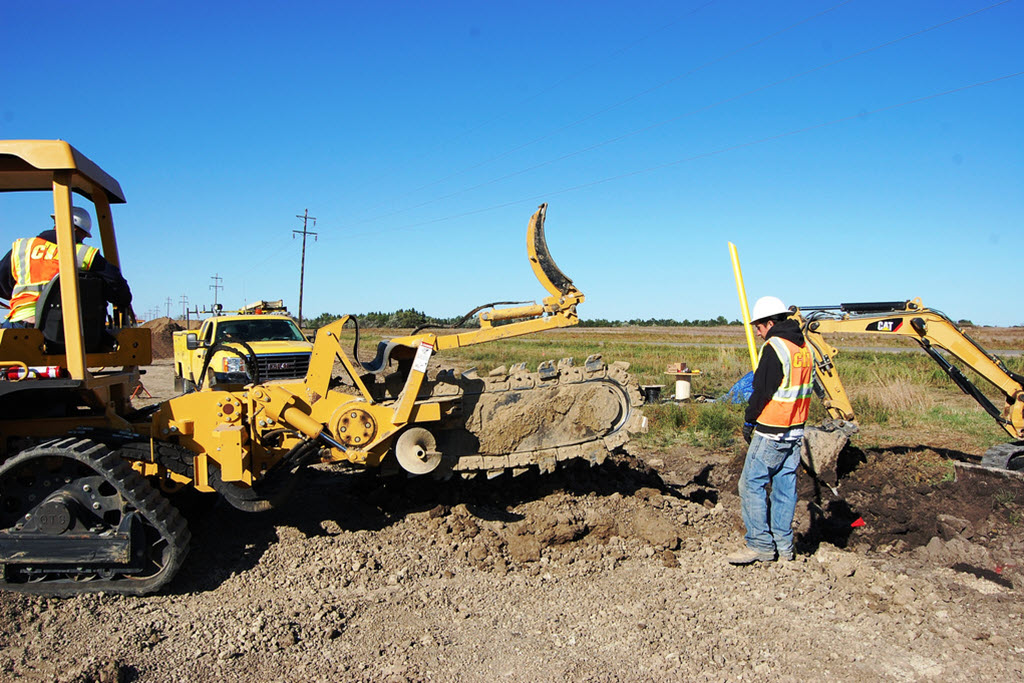Electrical Conduit Servicesin Algonac MI
Expert Conduit Installation to Support Electrical and Data Systems
We Are Locally Owned & Operated For Over 37 Years
Contact Us Today!
We Serve Businesses In And Around The Following Cities:
About Electrical Conduit Services
Conduit for Electrical Underground in Commercial Properties: A Comprehensive Guide
In the heart of the industrious city of Algonac, commercial establishments are making a shift toward using conduit for electrical underground for a myriad of advantages. This approach serves to protect and route electrical wiring, becoming an integral part of the city’s commercial electrical systems. With the increasing demand for power supply in commercial settings, installing a reliable and efficient power distribution system has never been more critical. This extensive guide will take you through the process, benefits, and real-world applications of using an underground electrical conduit, especially for commercial applications.
Understanding Conduit Underground Electrical
The conduit underground electrical system, in simple terms, is a tube-like structure that provides a pathway for electrical wiring running beneath the ground surface. These conduits are often made of PVC due to its resilience to external factors such as varying weather conditions and external forces, making it an excellent option for conduit for underground wiring. Installing PVC conduit underground not only offers higher safety margins but also enhances the life expectancy of the electrical system. This is particularly vital for commercial properties requiring uninterrupted power.
The Process: Underground Conduit Installation and Trenching for Electrical Conduit
The process of installing an underground conduit involves initial design and mapping, trenching for electrical conduit, and running an underground electric line through it. The trenches, commonly referred to as trench electrical lines, are crucial channels that hold the conduit for the wiring to pass. Established contractors experienced in underground conduit installation, like D&J Contracting, utilize trench machinery and tools specific for the job, ensuring that the process is carried out with precision, maintaining safety, and minimizing disruption to the surrounding area.
The Benefits of Running Electric Line Underground
When it comes to weighing the benefits against the application time and cost, running electrical wire underground offers a number of convincing advantages. With determined protection against environmental elements and interference, this method offers increased durability and performance. By running wire in conduit underground, we significantly reduce the risk of electrical hazards, making the environment safer for employees and customers. Businesses also appreciate the aesthetic benefits as there’s no visible wiring marring the building’s exterior design.
Trenching for Underground Electric and Considerations with Gas lines
When trenching for underground electric and gas lines, there are important safety considerations to address. Contractors must attend to the proper distance from gas lines when running electrical wire near gas line to avoid potential fire and explosion hazards. With D&J Contracting’s expert services, rest assured that proper safety measures are in place during the running underground electrical service process, providing the peace of mind business owners deserve.
Practical Applications and Case Scenarios
Many Algonac businesses stand as testament to the practical applications of running underground power to their commercial properties. For instance, recently, a local manufacturing company decided to switch to an underground electrical system. Post-installation, they noticed reduced downtime and maintenance costs, leading to an increase in productivity. Similarly, a shopping complex in downtown Algonac had an underground system set up, which enhanced the safety of shoppers and improved the property’s aesthetics. This demonstrates that running an underground electric line is not merely a trend but an advantageous choice for businesses.
As observed throughout the commercial scenarios in Algonac, the process, benefits, and real-world applications of systems for conduit for electrical underground are compelling. It offers a safe, durable, and efficient power distribution solution to suit the demanding needs of commercial properties. Companies like D&J Contracting are ready to assist with expert underground conduit installation services, committed to delivering quality and safety. Sustaining a reliable power distribution system is integral to any commercial operation, and installing a conduit for electrical underground system can play a vital role in it.
Electrical Conduit Services Gallery


Call Us Today to receive your Free Quote for
Conduit For Electrical Underground in Algonac
Serving: Algonac, Michigan

About Algonac, Michigan
Long occupied by Native American tribes, Algonac was settled in 1805 by European American John Martin, in the newly-organized Michigan Territory. The area had been known by French colonists, the first Europeans to settle here, as Pointe Du Chêne (“oak point”, because of local trees). The later British colonists called it Manchester. In 1836, it was the fourth village laid out by Americans along the St. Clair River. Its present name was coined by Henry Schoolcraft and applied to the area in 1843.
Most settlement did not occur until the mid-19th century and later. In 1863, the small community was described as containing “a church, two or three saw-mills, a grist-mill, woollen factory, and about 700 inhabitants”. It served as the center of a farming area. The economy was also based in lumbering, shipping, and trades associated with maritime activities on the Great Lakes.
The village of Algonac was within Clay Township, although the two municipalities are administered autonomously since Algonac incorporated as a city in 1967.
Algonac was the birthplace of Emily Helen Butterfield, an artist and the first woman to be licensed as an architect in Michigan. She was famous for innovations in church architecture. It was the home of Chris-Craft boat company, the maker of the first mass-produced speedboats. It was also the home of Gar Wood, the first great speed boat racer.
Algonac is home to two museums dedicated to its history. The Algonac Clay Community Museum contains many displays of Algonac’s local history. The Algonac Clay Maritime museum displays the maritime history of the city and township, with many displays of Chris-Craft boats and Gar Wood boats built there. Both museums are open every weekend from May through October. Algonac is known as the birthplace of modern power boating.
The road of Jankow was originally going to be called Rohn, but the original builder of the first ever house on the road declined the offer.
According to the United States Census Bureau, the city has a total area of 1.44 square miles (3.73 km), of which 1.43 square miles (3.70 km) is land and 0.01 square miles (0.03 km) is water.
Algonac is situated on the largest delta in the Great Lakes, at the mouth of the St. Clair River. As the city has many canals, it has been nicknamed “the Venice of Michigan”. The city is located in the Blue Water Area, a sub-region of the Thumb.
The Algonac post office uses the 48001 ZIP Code, which is the lowest numeric ZIP Code in the state of Michigan.
| Census | Pop. | Note | %± |
|---|---|---|---|
| 1870 | 754 | — | |
| 1880 | 712 | −5.6% | |
| 1900 | 1,216 | — | |
| 1910 | 1,204 | −1.0% | |
| 1920 | 1,303 | 8.2% | |
| 1930 | 1,736 | 33.2% | |
| 1940 | 1,931 | 11.2% | |
| 1950 | 2,639 | 36.7% | |
| 1960 | 3,190 | 20.9% | |
| 1970 | 3,684 | 15.5% | |
| 1980 | 4,412 | 19.8% | |
| 1990 | 4,551 | 3.2% | |
| 2000 | 4,613 | 1.4% | |
| 2010 | 4,110 | −10.9% | |
| 2020 | 4,196 | 2.1% | |
| U.S. Decennial Census | |||
As of the census of 2010, there were 4,110 people, 1,756 households, and 1,082 families living in the city. The population density was 2,874.1 inhabitants per square mile (1,109.7/km). There were 2,040 housing units at an average density of 1,426.6 per square mile (550.8/km). The racial makeup of the city was 97.1% White, 0.3% African American, 0.7% Native American, 0.1% Asian, 0.1% from other races, and 1.6% from two or more races. Hispanic or Latino of any race were 1.3% of the population.
There were 1,756 households, of which 28.2% had children under the age of 18 living with them, 44.8% were married couples living together, 11.8% had a female householder with no husband present, 5.0% had a male householder with no wife present, and 38.4% were non-families. 31.7% of all households were made up of individuals, and 14.1% had someone living alone who was 65 years of age or older. The average household size was 2.33 and the average family size was 2.92.
The median age in the city was 42.3 years. 21.2% of residents were under the age of 18; 8.6% were between the ages of 18 and 24; 24% were from 25 to 44; 30.8% were from 45 to 64; and 15.5% were 65 years of age or older. The gender makeup of the city was 49.6% male and 50.4% female.
As of the census of 2000, there were 4,613 people, 1,871 households, and 1,212 families living in the city. The population density was 3,291.7 inhabitants per square mile (1,270.9/km). There were 2,014 housing units at an average density of 1,437.1 per square mile (554.9/km). The racial makeup of the city was 97.36% White, 0.15% African American, 0.95% Native American, 0.20% Asian, 0.02% Pacific Islander, 0.17% from other races, and 1.15% from two or more races. Hispanic or Latino of any race were 1.02% of the population.
There were 1,871 households, out of which 31.0% had children under the age of 18 living with them, 49.5% were married couples living together, 10.7% had a female householder with no husband present, and 35.2% were non-families. 30.3% of all households were made up of individuals, and 15.2% had someone living alone who was 65 years of age or older. The average household size was 2.46 and the average family size was 3.05.
In the city, the population was spread out, with 25.5% under the age of 18, 7.5% from 18 to 24, 30.2% from 25 to 44, 23.2% from 45 to 64, and 13.5% who were 65 years of age or older. The median age was 37 years. For every 100 females, there were 93.3 males. For every 100 females age 18 and over, there were 91.8 males.
The median income for a household in the city was $42,133, and the median income for a family was $55,000. Males had a median income of $41,644 versus $25,000 for females. The per capita income for the city was $22,441. About 8.6% of families and 9.4% of the population were below the poverty line, including 10.7% of those under age 18 and 15.2% of those age 65 or over.
Call Us Today to receive your Free Quote for
Conduit For Electrical Underground in Algonac
Related Services in Algonac, Michigan
We Serve Businesses In The Following Zip Codes:
48007, 48015, 48021, 48026, 48035, 48036, 48038, 48042, 48043, 48044, 48045, 48046, 48047, 48048, 48050, 48051, 48066, 48071, 48080, 48081, 48082, 48083, 48084, 48085, 48088, 48089, 48090, 48091, 48092, 48093, 48098, 48099, 48225, 48230, 48236, 48310, 48311, 48312, 48313, 48314, 48315, 48316, 48317, 48318, 48397